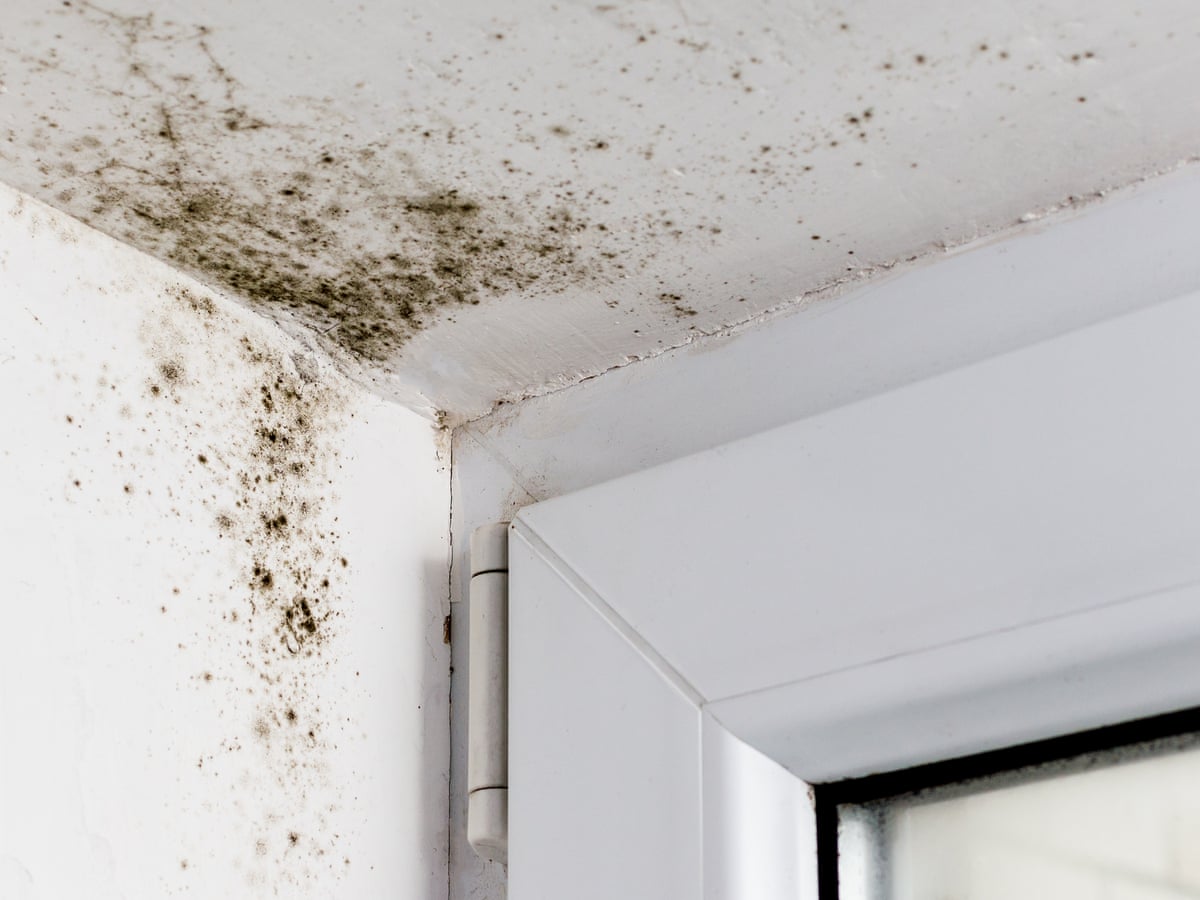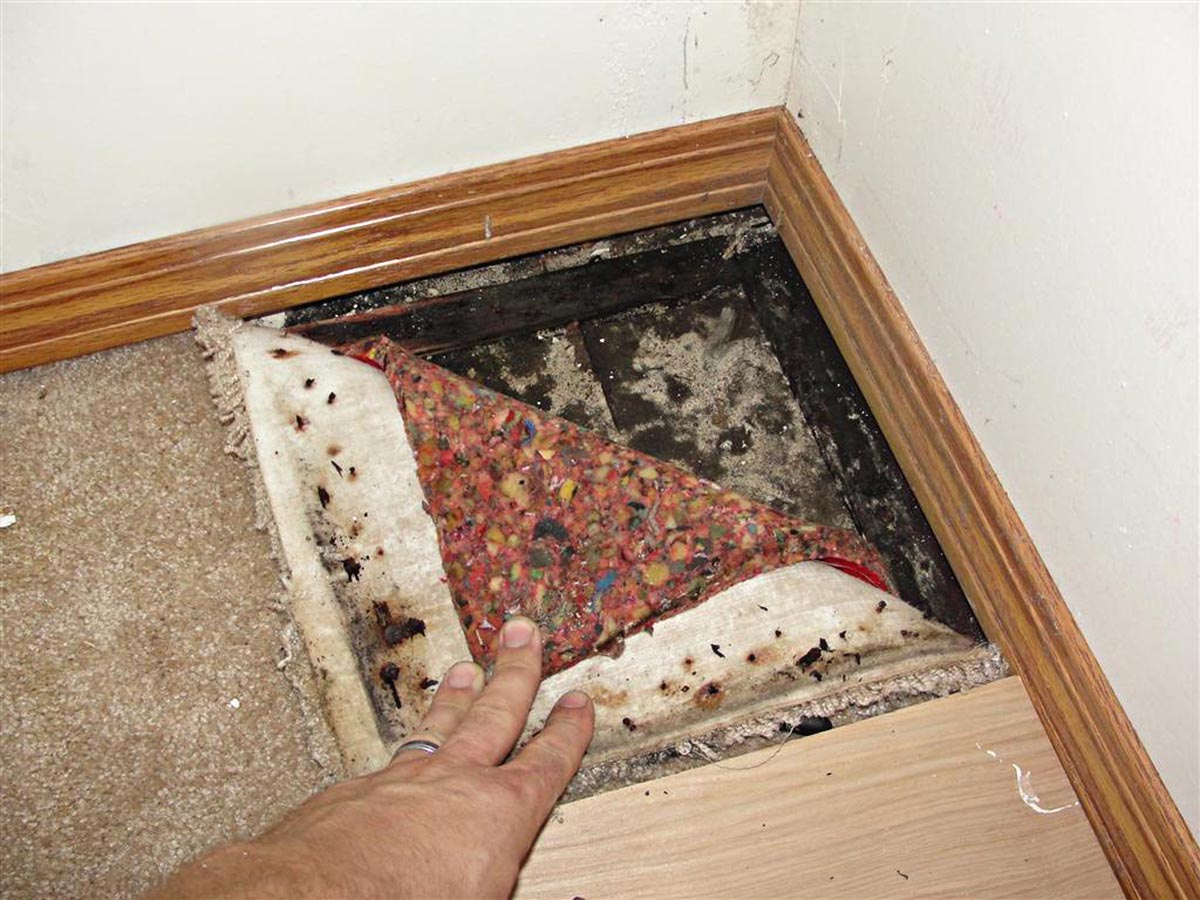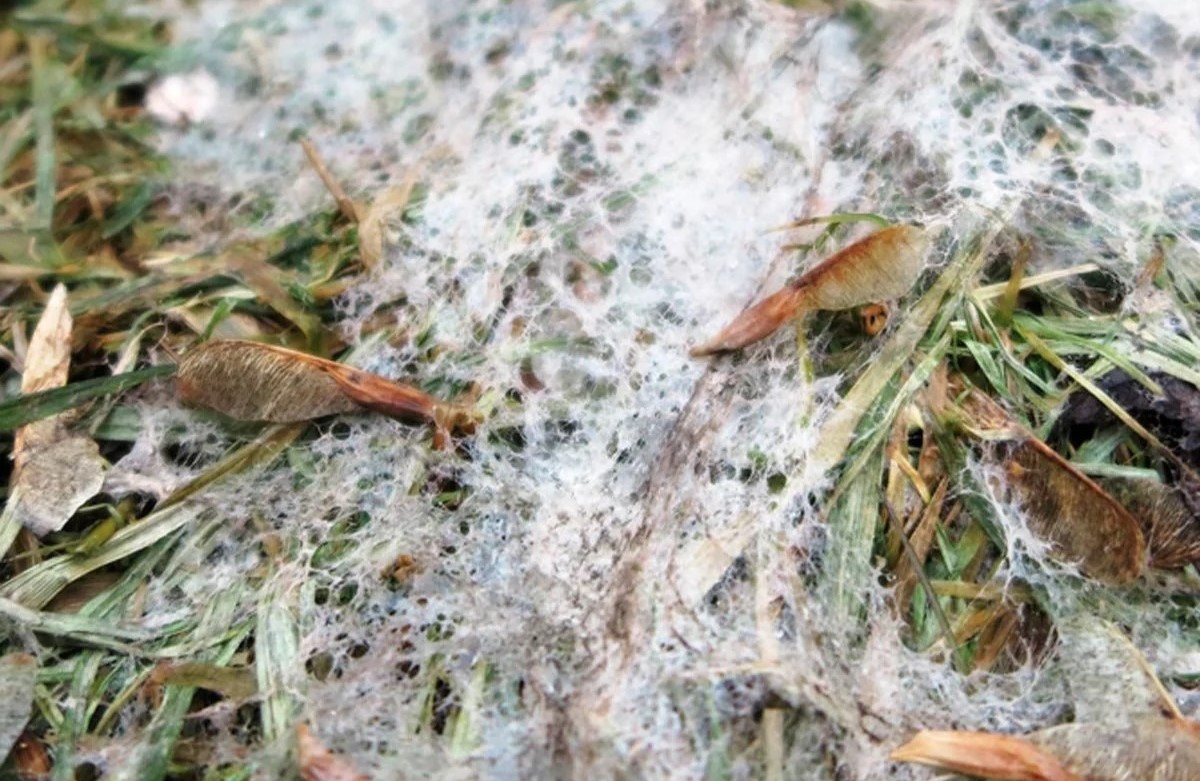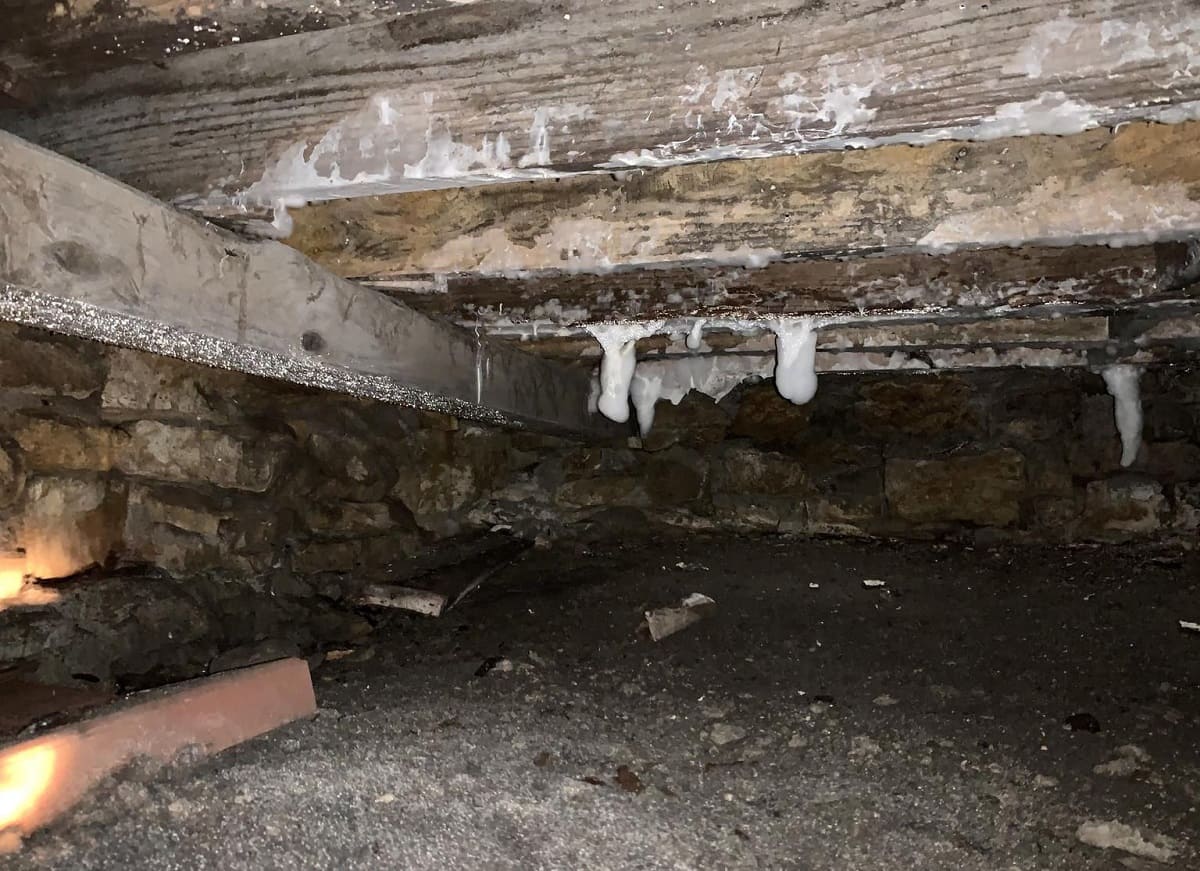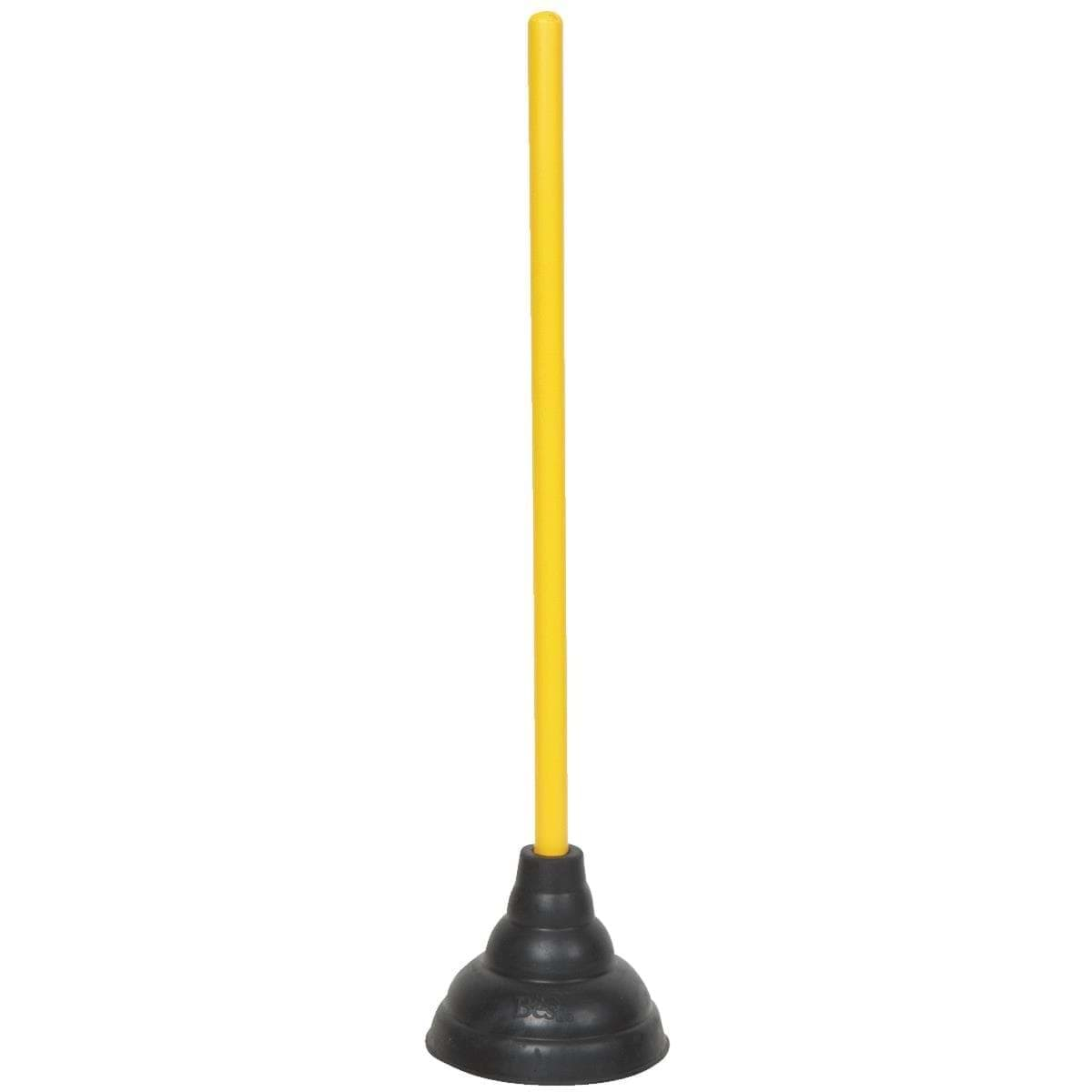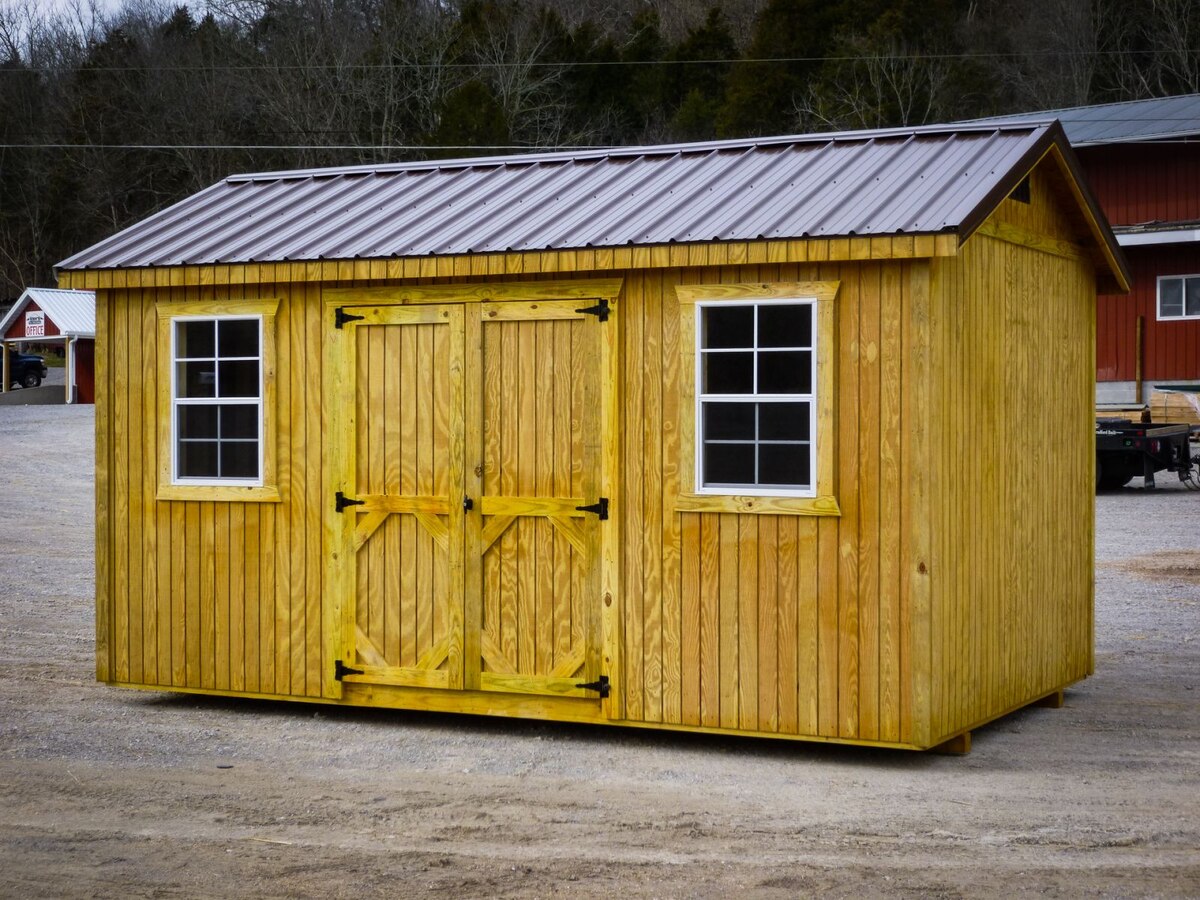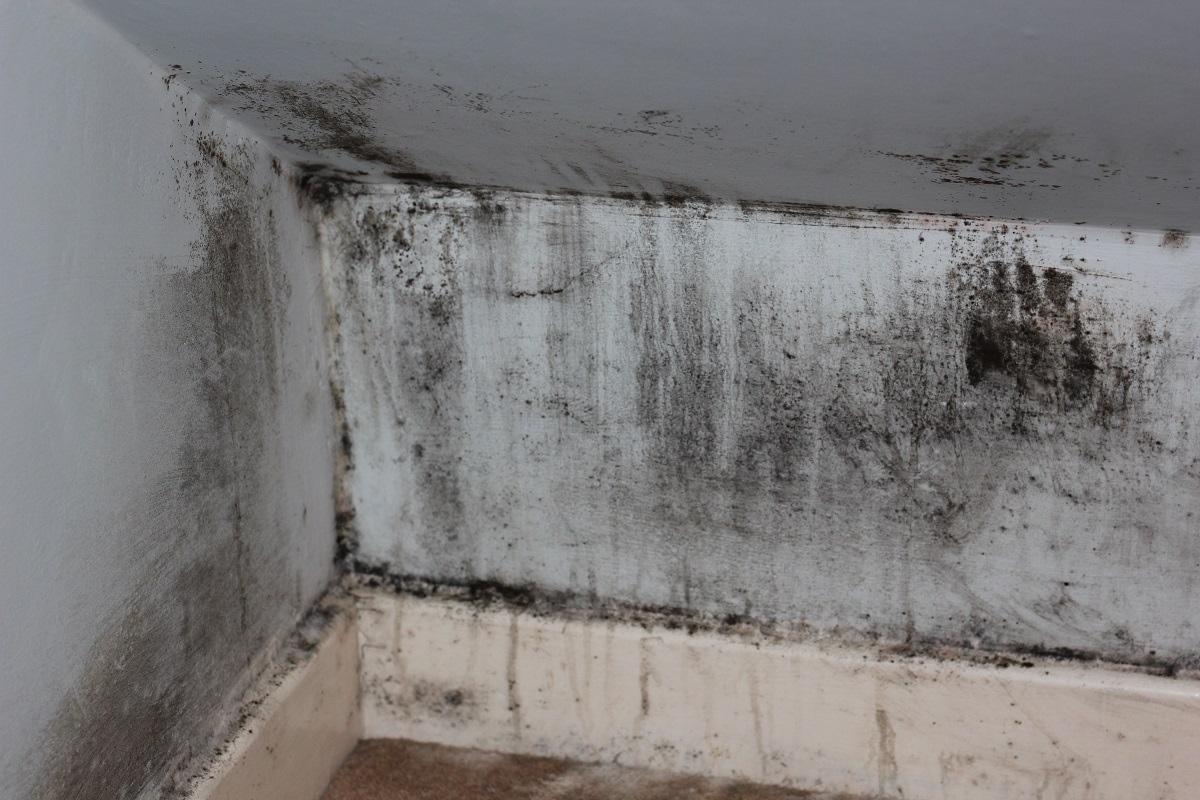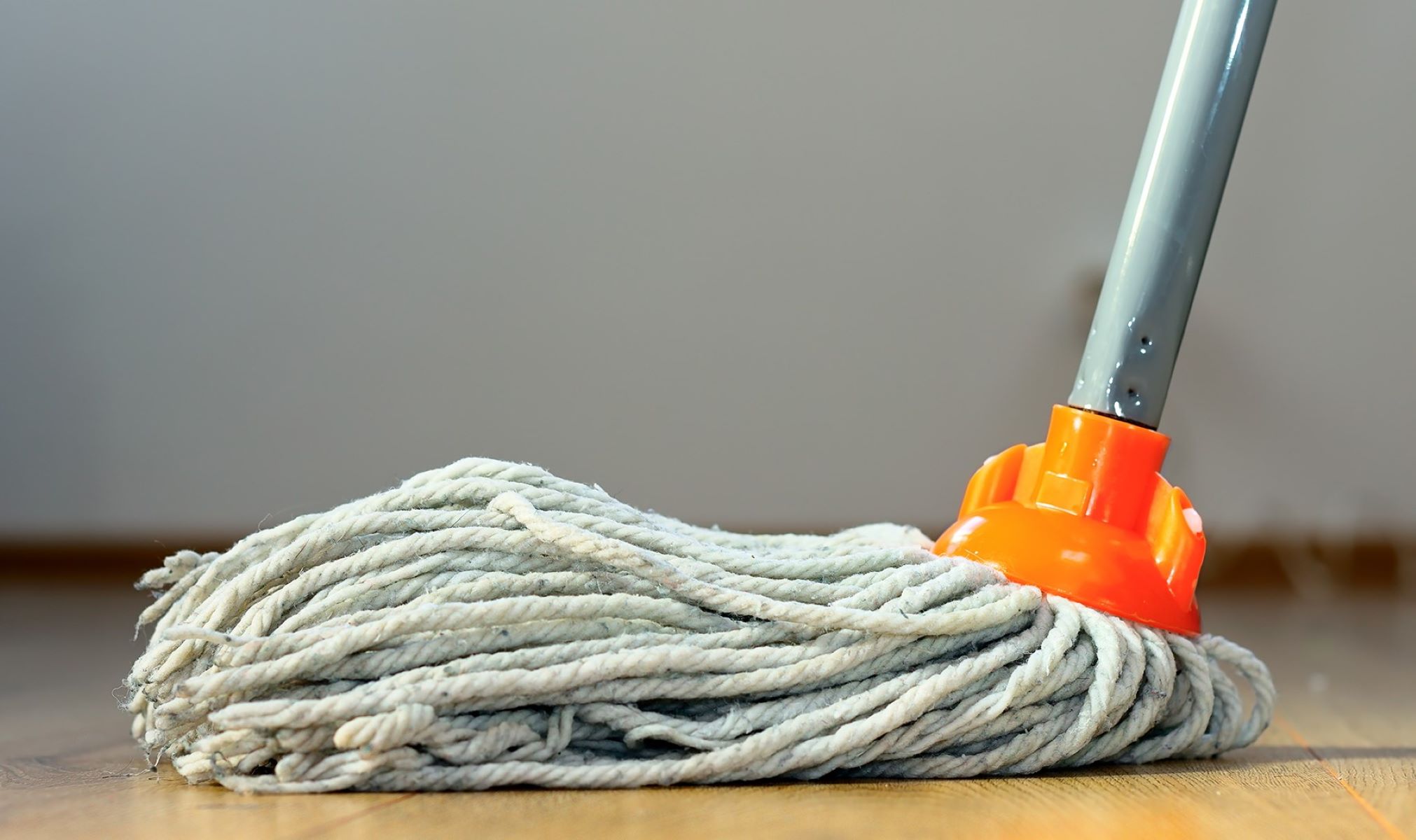Home>Home Maintenance>What Does Black Mold Look Like In An Air Conditioner
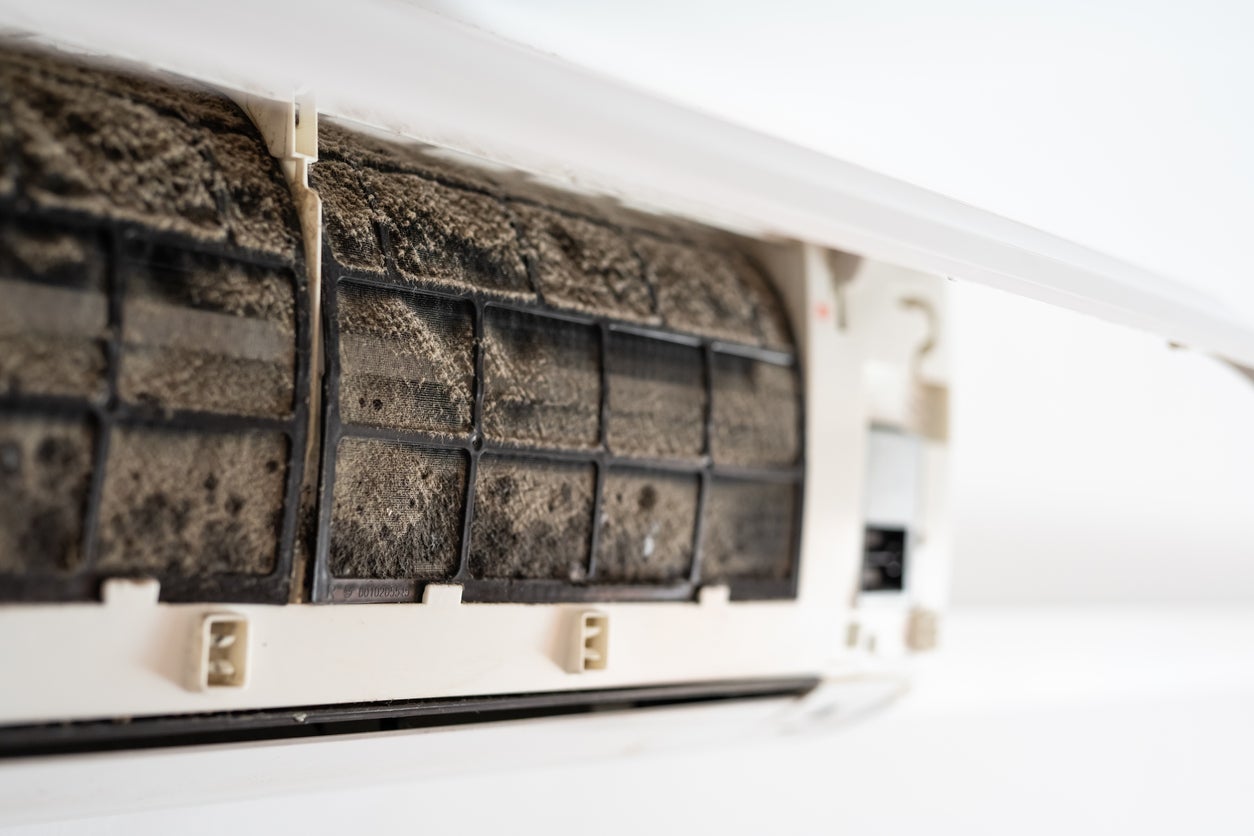

Home Maintenance
What Does Black Mold Look Like In An Air Conditioner
Modified: May 6, 2024
Learn what black mold looks like in an air conditioner and how to prevent it with our home maintenance tips. Keep your indoor air quality safe and healthy.
(Many of the links in this article redirect to a specific reviewed product. Your purchase of these products through affiliate links helps to generate commission for Storables.com, at no extra cost. Learn more)
Introduction
Welcome to the world of home maintenance, where taking care of your living space is essential for a healthy and comfortable environment. One crucial aspect of home maintenance is ensuring that your air conditioner is clean and free from any potential health hazards, such as black mold.
Black mold, scientifically known as Stachybotrys chartarum, is a type of fungus that can thrive in damp and humid environments. Unfortunately, air conditioners provide the perfect breeding ground for black mold due to the presence of moisture and organic materials.
In this article, we will explore what black mold looks like in an air conditioner, common causes of its growth, the health risks it poses, how to identify it, potential damage it can cause, and ways to prevent and remove it. By understanding and taking preventive measures, you can keep your air conditioner mold-free and ensure a comfortable living space for you and your loved ones.
Key Takeaways:
- Keep your air conditioner mold-free by regularly cleaning filters, drip pans, and maintaining proper ventilation. Address water leaks promptly to prevent black mold growth and protect your health.
- If you suspect black mold in your air conditioner, seek professional help for safe and effective mold removal. Prioritize regular maintenance to ensure a clean and healthy living space for you and your loved ones.
Read more: What Does Mold In Basement Look Like
Appearance of Black Mold in an Air Conditioner
Black mold in an air conditioner can have various appearances, ranging from dark green to black in color. It often appears as slimy or fuzzy patches, typically found in areas that are constantly exposed to moisture, such as the evaporator coil, air vents, and drip pans. These areas provide the ideal conditions for mold growth due to the accumulation of condensation and organic debris.
When inspecting your air conditioner, you may notice that the black mold patches resemble dirt or soot. However, upon closer examination, you’ll see that they have a velvety or powdery texture. Additionally, black mold can emit a musty odor, which is a telltale sign of its presence.
It’s important to note that black mold isn’t the only type of mold that can grow in an air conditioner. Other types of mold, such as Aspergillus and Penicillium, may also be present. However, black mold is one of the most common and potentially harmful types.
If you suspect the presence of black mold in your air conditioner or notice any of these visual indications, it’s crucial to take immediate action to prevent further growth and protect your health.
Common Causes of Black Mold Growth
Black mold requires specific conditions to grow and thrive. Understanding the common causes of black mold growth in air conditioners can help you prevent its occurrence and maintain a healthy indoor environment. Here are some of the primary factors that contribute to black mold growth:
- Excess moisture: Moisture is a key prerequisite for mold growth. Air conditioners create a cool environment that can cause condensation to form on various components, such as the evaporator coil and drip pan. If this moisture is not properly drained and removed, it can lead to the growth of black mold.
- Poor ventilation: Inadequate airflow within the air conditioning system can exacerbate moisture buildup, creating an environment conducive to mold growth. Insufficient ventilation restricts the flow of fresh air and prevents the evaporation of excess moisture, providing an ideal breeding ground for black mold.
- High humidity levels: High humidity levels in your home can contribute to black mold growth. When the air conditioner is unable to effectively regulate humidity, moisture can accumulate and create conditions suitable for mold to thrive.
- Leaking ductwork or pipes: Any leaks in the air conditioning system, including the ductwork or pipes, can lead to the release of moisture into the surrounding areas. These hidden leaks can often go unnoticed, providing an ideal environment for mold spores to settle and multiply.
- Improper maintenance: Neglecting regular maintenance of your air conditioning system can contribute to black mold growth. Failure to clean or replace filters, remove debris from the system, and conduct routine inspections can lead to the accumulation of dust, organic matter, and moisture, creating a breeding ground for mold.
By addressing these common causes and implementing preventative measures, you can significantly reduce the risk of black mold growth in your air conditioner. Regular maintenance, proper ventilation, and humidity control are key to ensuring a mold-free environment and preserving the efficiency of your cooling system.
Health Risks Associated with Black Mold in Air Conditioners
Black mold in air conditioners can pose significant health risks to individuals, particularly those who are sensitive or have pre-existing respiratory conditions. When mold spores are released into the air and inhaled, they can cause a range of health issues. Here are some of the potential health risks associated with black mold in air conditioners:
- Allergic reactions: Exposure to black mold spores can trigger allergic reactions in susceptible individuals. Symptoms may include coughing, sneezing, watery eyes, nasal congestion, and skin irritation. People with asthma or allergies may experience more severe symptoms if exposed to black mold.
- Respiratory problems: Prolonged or repeated exposure to black mold can lead to respiratory problems, especially for individuals with respiratory conditions such as asthma or chronic obstructive pulmonary disease (COPD). Breathing in mold spores can cause coughing, wheezing, chest tightness, and difficulty breathing.
- Flu-like symptoms: Black mold exposure can sometimes produce flu-like symptoms, such as headaches, fatigue, fever, and muscle aches. These symptoms may be more pronounced in individuals with weakened immune systems.
- Mycotoxicosis: In rare cases, prolonged exposure to high levels of black mold can lead to mycotoxicosis, a condition caused by the toxic substances (mycotoxins) released by certain molds. Symptoms may include neurological problems, immune system suppression, gastrointestinal issues, and skin infections.
- Aggravation of existing conditions: Black mold can worsen symptoms in individuals with existing respiratory conditions, such as asthma or allergies. It may trigger asthma attacks, cause severe allergic reactions, or heighten sensitivity to other allergens.
If you suspect that black mold is present in your air conditioner and you or your family members are experiencing any of these health symptoms, it is important to seek professional medical advice. Additionally, taking action to remove the mold and prevent its recurrence is essential for creating a safe and healthy indoor environment.
Signs and Symptoms of Black Mold Contamination in an Air Conditioner
Identifying the signs and symptoms of black mold contamination in an air conditioner is crucial for prompt action and prevention of further mold growth. While some indicators may be visible to the naked eye, others may require a closer inspection. Here are some common signs and symptoms to look out for:
- Visible mold growth: The most obvious sign of black mold contamination in an air conditioner is the presence of visible mold growth. Check the evaporator coil, drip pan, air vents, and any other areas where moisture may accumulate. Look for dark green or black patches that appear slimy or fuzzy in texture.
- Musty odor: Black mold has a distinct musty odor. If you perceive an unpleasant, earthy smell coming from your air conditioner, it could be an indication of mold growth. The odor is often strongest when the air conditioner is running.
- Allergic reactions: If you or your family members experience frequent allergic reactions when using the air conditioner, it could be a sign of black mold contamination. Symptoms may include sneezing, coughing, itchy or watery eyes, congestion, and skin irritation.
- Increase in respiratory issues: Black mold can worsen respiratory symptoms, especially in individuals with pre-existing conditions such as asthma or allergies. If breathing difficulties, wheezing, or coughing become more pronounced when the air conditioner is in use, it may suggest the presence of mold.
- Water or moisture leaks: If you notice any water or moisture leaks around your air conditioner, it is a sign of potential mold growth. Check for condensation on pipes, the evaporator coil, or dripping water around the system. Leaks provide the necessary moisture for mold to thrive.
If you observe any of these signs or symptoms, it is important to take immediate action to prevent further mold contamination and protect your health. Ignoring the issue can result in the spreading of mold spores throughout your home and potential damage to your air conditioning system.
Regularly inspect and clean your air conditioner to prevent black mold growth. Look for dark, slimy patches or a musty odor, and use a mixture of water and bleach to clean any mold you find.
Read more: What Does Mold On Insulation Look Like
How to Identify Black Mold in an Air Conditioner
Identifying black mold in an air conditioner may require a closer inspection to ensure accurate detection. Here are the steps to help you identify black mold in your air conditioning system:
- Visual inspection: Begin by visually inspecting the various components of your air conditioner, including the evaporator coil, air vents, and drip pan. Look for any black or dark green patches that appear slimy or fuzzy in texture. These are indications of black mold growth.
- Check for musty odor: Black mold has a distinct musty odor. When your air conditioner is running, pay attention to any foul or earthy smell. If you detect a strong musty odor, it could be a sign of black mold contamination.
- Use a flashlight: In dark or hard-to-reach areas, use a flashlight to illuminate the space and carefully inspect for signs of mold. Mold can often hide in hidden corners, ductwork, or behind insulation.
- Look for water stains or discoloration: Check for any water stains or discoloration on the surfaces of your air conditioner. This could indicate a moisture problem and potential mold growth. Pay special attention to areas near the evaporator coil and drip pan.
- Hire a professional: If you are unsure about identifying black mold or suspect a significant mold infestation, it is advisable to seek the assistance of a professional mold inspector. They have the expertise and tools to accurately identify and assess mold contamination in your air conditioner.
If you discover black mold in your air conditioner, it is essential to take immediate action to prevent its further spread and protect your health. Do not attempt to remove the mold yourself, as improper handling can lead to the dispersion of mold spores into the air. Instead, consult with a professional mold remediation specialist to safely and effectively address the issue.
Potential Damage Caused by Black Mold in Air Conditioners
Black mold growth in air conditioners can result in various types of damage, both to the system itself and to the overall indoor environment. It is important to address mold growth promptly to prevent these potential damages. Here are some of the possible consequences of black mold in air conditioners:
- Deterioration of air conditioner components: Black mold can gradually deteriorate the components of your air conditioning system. The mold colonies and their byproducts can corrode metal surfaces, damage electrical connections, and clog air ducts. This can lead to reduced efficiency and performance issues with your air conditioner.
- Reduced indoor air quality: As the air conditioner circulates air, any mold present in the system can release spores into the indoor environment. This can lead to a significant decrease in indoor air quality, potentially causing respiratory problems, allergies, and other health issues for the occupants of the space.
- Spread of mold to other areas: If left unchecked, black mold in an air conditioner can release spores that can spread to other areas of your home or building. These spores can settle on surfaces, leading to further mold growth and contamination in different parts of your property.
- Unpleasant odors: In addition to health risks, black mold in air conditioners can also cause foul and musty odors to permeate your living space. These odors can be persistent and unpleasant, affecting the overall comfort of your home.
- Structural damage: In severe cases of prolonged mold infestation, black mold can cause structural damage to your property. Mold can weaken walls, ceilings, and floors, compromising their structural integrity. This can lead to costly repairs and renovations.
It is important to address black mold in air conditioners as soon as possible to prevent these potential damages. Regular maintenance, prompt mold remediation, and implementing preventive measures can help safeguard your air conditioner and maintain a healthy indoor environment.
Preventing and Removing Black Mold in an Air Conditioner
Preventing and removing black mold from your air conditioner requires a combination of regular maintenance, proper care, and proactive measures. By following these steps, you can minimize the risk of mold growth and maintain a healthy indoor environment:
- Maintain proper ventilation: Ensure that your air conditioning system has adequate airflow and ventilation. This helps prevent moisture buildup and creates a less favorable environment for mold growth. Keep air vents and ducts clean and unobstructed.
- Control humidity levels: Monitor and maintain appropriate humidity levels in your home or building. Consider using dehumidifiers in areas prone to excess moisture, such as basements or bathrooms. Keep the indoor humidity below 50% to inhibit mold growth.
- Regularly clean and replace filters: Clean or replace your air conditioner filters according to the manufacturer’s recommendations. Dirty filters can become breeding grounds for mold, so regular maintenance helps prevent mold spores from circulating in your indoor air.
- Inspect and clean drip pans: Check and clean the drip pans of your air conditioner regularly. Accumulated water in the drip pans can create a moist environment ideal for mold growth. Ensure that the pans are properly draining to prevent water from pooling.
- Address water leaks promptly: If you notice any water leaks or moisture around your air conditioner, address them promptly. Repair any leaking pipes, seal any gaps or cracks, and ensure that the condensation drain line is clear and functioning properly.
- Regularly clean and maintain the system: Keep the interior of your air conditioner clean and free from debris. Regularly clean the evaporator coil, air vents, and other components to prevent the accumulation of dirt, dust, and organic matter, which can support mold growth.
- Seek professional mold remediation: If you discover black mold in your air conditioner, it is essential to consult with a professional mold remediation specialist. They have the expertise and equipment to safely and effectively remove the mold and prevent its recurrence.
- Consider UV light installation: Installing UV lights in your air conditioning system can help inhibit the growth of mold and bacteria. UV lights emit ultraviolet radiation that kills or neutralizes microorganisms, reducing the risk of mold contamination.
By implementing these preventive measures and following a regular maintenance schedule, you can minimize the chances of black mold growth in your air conditioner and maintain a healthy and comfortable indoor environment.
Professional Mold Remediation for Air Conditioners
When it comes to mold remediation in air conditioners, seeking the assistance of a professional mold remediation specialist is highly recommended. Professional mold remediation ensures a thorough and effective removal process, reducing the risk of further mold growth and protecting your health. Here is what you can expect from professional mold remediation for air conditioners:
- Inspection and assessment: A professional mold remediation specialist will conduct a comprehensive inspection of your air conditioning system to identify the extent of the mold contamination. They will assess the affected areas and determine the appropriate remediation plan.
- Mold containment: To prevent the spread of mold spores during the remediation process, professionals will set up proper containment measures. This may include using plastic sheeting to isolate the affected areas and sealing off ventilation systems to prevent cross-contamination.
- Mold removal: Professionals will use specialized techniques and equipment to safely remove mold from your air conditioner. This may include using HEPA vacuums, antimicrobial agents, and other approved cleaning solutions. They will clean and disinfect affected components, such as the evaporator coil, air vents, and drip pans, to ensure complete mold removal.
- Repair and restoration: If your air conditioner has suffered any damage due to mold growth, professionals can provide repair and restoration services. This may involve replacing damaged insulation, repairing leaks, and restoring the proper functioning of the system.
- Preventive measures: In addition to mold removal, professionals will provide recommendations for preventive measures to minimize the risk of future mold growth. This may include improving ventilation, controlling humidity levels, and implementing regular maintenance routines for your air conditioning system.
- Post-remediation testing: After completing the mold remediation process, professionals may conduct post-remediation testing to ensure that the air conditioner is free from mold spores. This testing confirms the effectiveness of the remediation and provides reassurance that the air quality has been restored.
- Education and guidance: Professionals will also educate you about the importance of mold prevention and provide guidance on how to maintain a clean and mold-free air conditioning system. This empowers you to take proactive steps in preventing future mold growth.
Professional mold remediation for air conditioners not only ensures the thorough removal of mold but also promotes a safe and healthy indoor environment. By entrusting the remediation process to professionals, you can have peace of mind knowing that the mold issue has been properly handled, and measures are in place to prevent its recurrence.
Read more: What Does Mold Look Like On Stucco
Conclusion
Taking care of your air conditioner is crucial for maintaining a healthy and comfortable living environment. Black mold can pose serious health risks and cause damage to your air conditioning system. By understanding the appearance of black mold, common causes of its growth, health risks associated with it, and how to identify and prevent it, you can effectively safeguard your home.
Regular maintenance, proper ventilation, and controlling humidity levels are essential preventive measures to minimize the risk of black mold in your air conditioner. Promptly addressing water leaks, regularly cleaning filters and drip pans, and maintaining a clean system help create an inhospitable environment for mold growth.
If you suspect the presence of black mold in your air conditioner, it is vital to seek professional assistance. Professional mold remediation specialists have the expertise and tools to safely and effectively remove mold, preventing its further spread and minimizing health risks.
Remember, black mold can negatively impact indoor air quality and lead to respiratory problems, allergies, and other health issues. By being proactive in preventing and addressing black mold growth in your air conditioner, you can maintain a safe and comfortable living space for you and your loved ones.
Regular inspections, maintenance, and prompt action are key to ensuring a mold-free environment and optimal performance of your air conditioning system. By prioritizing the care of your air conditioner, you can enjoy the benefits of cool, clean air while safeguarding your health and well-being.
Curious about maintaining optimal comfort and efficiency in your home? Learning about air conditioners, including which models are top performers, helps ensure your living space remains cool and pleasant. On another note, maintaining your wooden furniture is crucial, especially when dealing with stubborn mold. Find out effective strategies for mold removal that can save your cherished pieces from damage.
Frequently Asked Questions about What Does Black Mold Look Like In An Air Conditioner
Was this page helpful?
At Storables.com, we guarantee accurate and reliable information. Our content, validated by Expert Board Contributors, is crafted following stringent Editorial Policies. We're committed to providing you with well-researched, expert-backed insights for all your informational needs.
